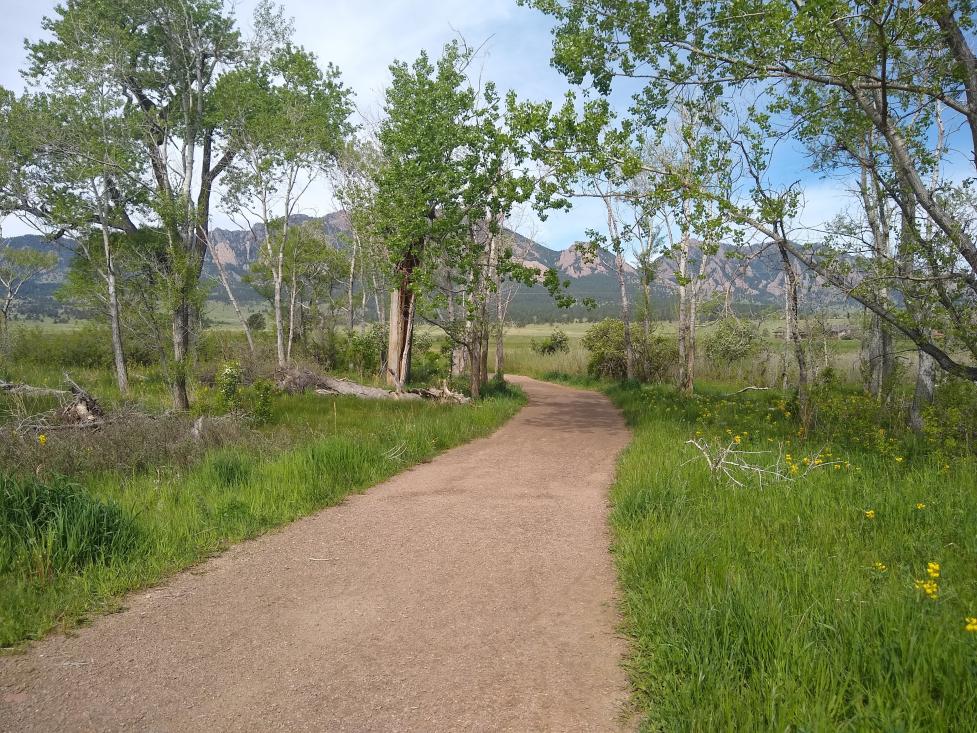Elevation Gain
The elevation gain listed on each trail page is the total elevation gain of the trail in feet.
General Difficulty Ratings
Trail Difficulty Ratings:
- Easy: Average grades generally below 6%, short distance, low maximum grades, few obstacles, no or few stairs, and close to access points.
- Easy/Medium: Trail has a mix of easy and medium segments.
- Medium: Average grades generally between 6 and 10%, varying distances, moderate maximum grades, some obstacles, some stairs, and varying distances from access points.
- Medium/Hard: Trail has a mix of medium and hard segments.
- Hard: Average grades over 10%, varying distance, steep maximum grades, many obstacles, stairs can be expected, longer distances from access points.
Additional information about trail difficulty:
- Trail Grade - Represents the steepness of a trail. Percent slope represents rise over run. A continuous 8% grade would rise 8 feet over a run of 100 feet.
- Trail Cross-slope - The camber or cant of the trail from one side to the other.
- Tread Width - The width of the trail surface on which visitors travel.
- Shade - Shade cover references the amount of the trail covered by 15 ft tree canopy. Time of day and season will affect direct shade cover.
Trails described as “mobility friendly”
Visitors on these trails can expect to encounter a trail tread 36” or greater – wide enough to accommodate a wheelchair, stroller or walker. Trail surfaces are firm and stable, and usually surfaced with road-base or crusher-fines material with some small irregularities (rocks, roots, vegetation, etc.) Mobility-friendly trails do not exceed 20% grade, and generally run less than 12%.*
*A 12% trail rises 12’ in elevation for every 100’ of travel.
Difference between general difficulty ratings and accessible difficulty ratings
OSMP applies general difficulty ratings to all its trails, regardless of user group. These ratings describe how a given trail compares to all other trails on the OSMP system from the perspective of a visitor who is able to explore the entire system. An “easy” trail is often surfaced, wider and graded gently – many of these trails would be considered “walking” trails. Visitors on a “difficult” trail might expect a natural-surfaced, narrow trail tread, steeply graded with consistent obstacles such as rocks, roots or stream-crossings, and structures such as stairs, switchbacks or stepping stones.
In the context of accessibility, difficulty ratings indicate the challenge presented to visitors experiencing disabilities, and in particular those with mobility devices. These ratings primarily describe the grade and cross-slope (camber) of the trail. An “easy” trail would be usable without assistance by a visitor in a wheelchair, and might provide shade and areas suitable for resting. A “difficult” trail may be steeper, rougher or more exposed, and might be suitable for very fit users looking for a challenge, for those with assistance or for those using Other Power-Driven Mobility Devices (OPDMDs) or adaptive mountain bikes.
